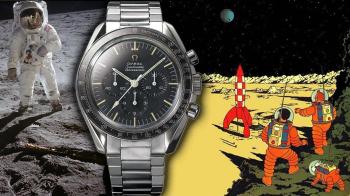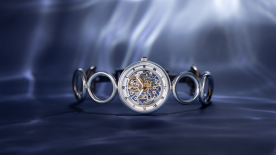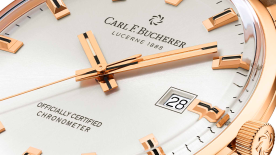On 21 July 1969, history was written when the Apollo 11 mission succeeded in landing Neil Armstrong and Buzz Aldrin — and the Omega Speedmaster — on the moon. The momentous event was the culmination of some of the most advanced technology of the time and continues to inspire future generations of explorers, scientists and engineers to this day.
Stories of humans exploring Earth’s largest satellite have populated our collective imagination for centuries, but we know next to nothing about what these speculative space travellers wore on their wrists. Let’s exercise a little creative license to give these intrepid adventurers the timepieces they deserve.
The Divine Comedy: Paradise (1321), Dante Alighieri
I just want to say first of all that I didn’t find The Divine Comedy particularly funny. I guess 14th-century Italian poets have a very different sense of humour from me. But we’re not here for Dante’s comedic talents. Dante Alighieri was one of the earliest creative figures to imagine what it would be like to be on the moon, and even though his journey was more of a spiritual than a physical one, we think he still needs a watch, to remind him to get home in time for dinner and all that.

The Omega Speedmaster Apollo 17 45th anniversary would be ideal for Dante — its small seconds subdial depicts the Greek god Apollo, who Dante appeals to in Cantos I and II as a source of guidance and blessing (a bit weird in what is supposed to be a heavily Christian poem, but ok, whatever).

Dante’s lunar visit is also characterised by his pseudo-scientific discussion with Beatrice about the material composition of the moon. This forms a neat connection to the Apollo 17 moon mission, which was strongly focused on geological objectives, collecting the largest lunar sample out of all the moon missions.
As anachronistic as it may be to imagine Dante Alighieri wearing a modern chronograph, let’s not forget that he described himself being shot to the moon by light beams projected from Beatrice’s eyes. Dante was not someone who was mega-concerned with realism. We’re just following his example.
From The Earth To The Moon (1865) and Around The Moon (1870), Jules Verne
The father of modern science-fiction, Jules Verne, plunged his characters into the depths of the ocean, floated them in balloons, propelled them around the world and shot them out of cannons. It’s easy to think that he wasn’t very fond of people, since he put them through ten kinds of hell in his books, but the landscape of modern imaginative literature would be a sad and poor place if not for him.
The luckless crew of the Colombiad moon projectile in Verne’s two lunar adventure novels missed the moon entirely when an accidental encounter with an asteroid threw them off course. They had to manually fire their rockets, resulting in a risky plummet back to Earth, which they somehow miraculously survived.
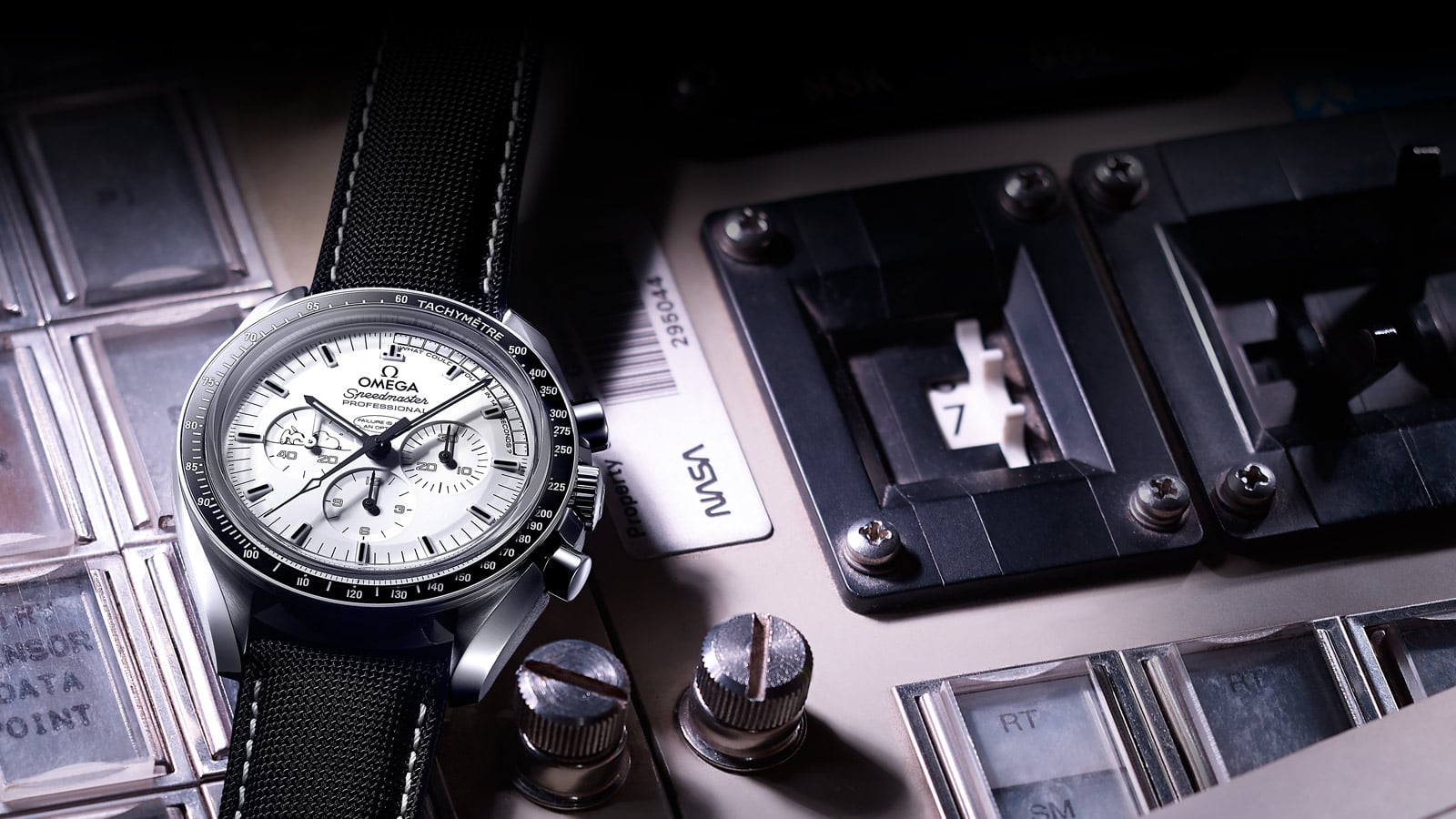
They could have used the Omega Speedmaster Moonwatch Apollo 13 Silver Snoopy Award, which commemorates the timepiece on board the ill-fated Apollo 13 mission in 1970. In a strange echo of events that Verne described exactly 100 years ago, the Apollo 13 crew used their official-issue Speedmaster to precisely time the manually activated rockets that brought them safely home when their mission was aborted.
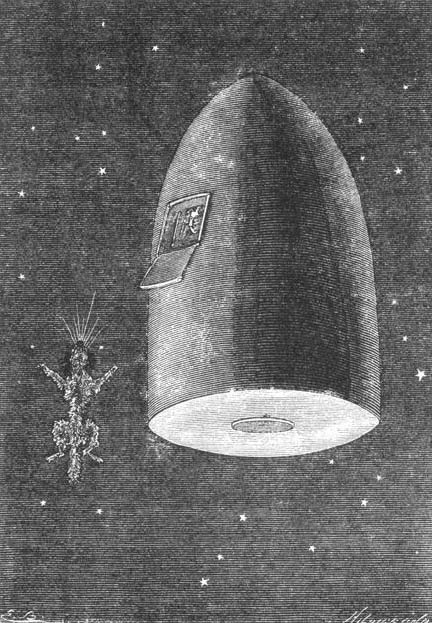
The Columbiad trio might have appreciated the Speedmaster “Snoopy” for another reason — it features the eponymous dog on the small seconds subdial and caseback as part of a NASA tradition celebrating achievements in flight safety. They would have found it a comforting reminder of their little black-and-white dog Satellite, who accompanied them on the launch but sadly died on board and had to be left in space.
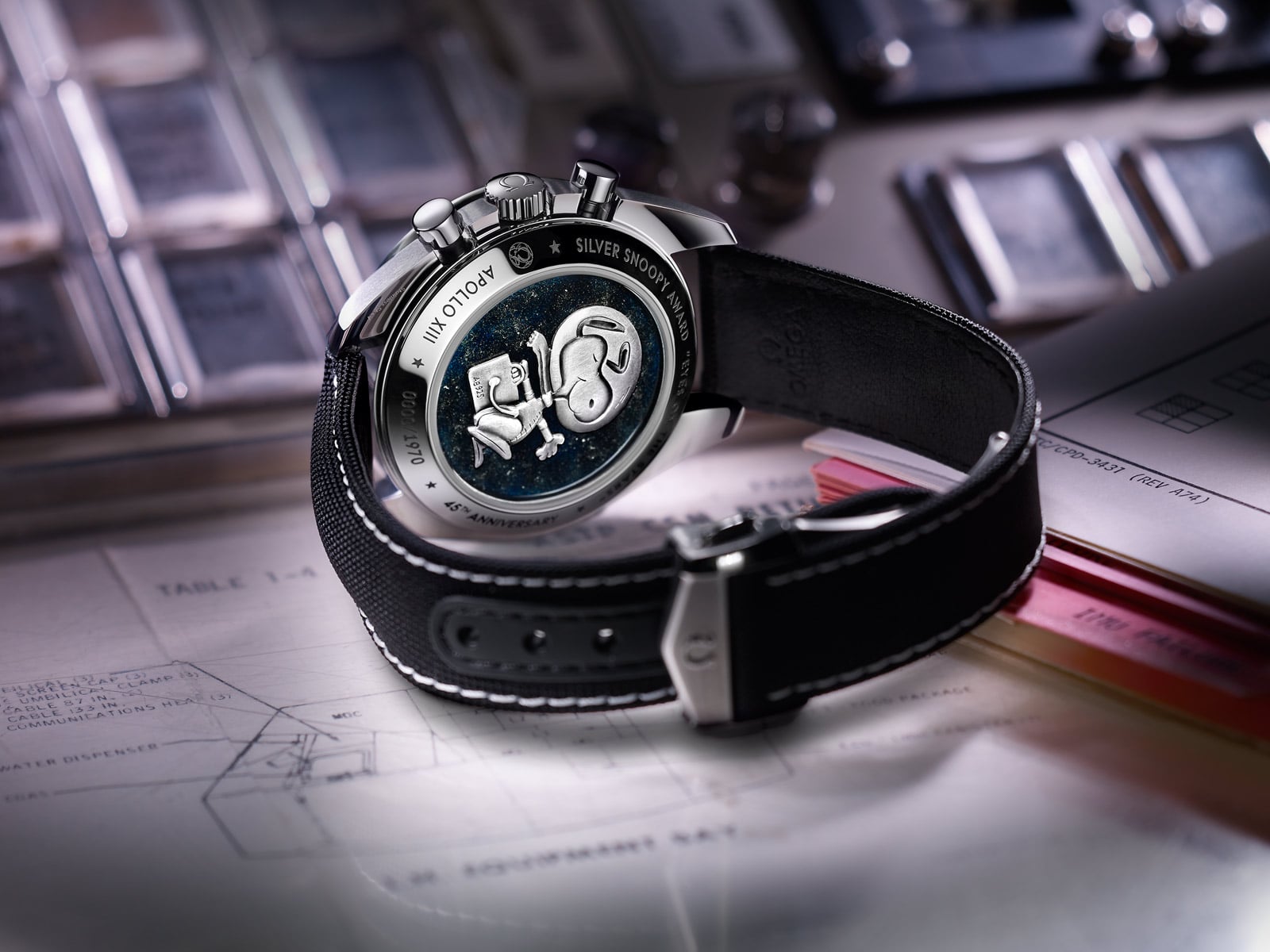
Woman In The Moon (1929), Fritz Lang
Filmed two years after his seminal work Metropolis, Woman In The Moon was German expressionist director Fritz Lang’s other attempt to break science fiction into the mainstream. Pioneering rocket scientist Hermann Oberth worked on the film as a technical advisor, and many aspects of cutting-edge rocket travel of the time were accurately represented and even predicted in the film.
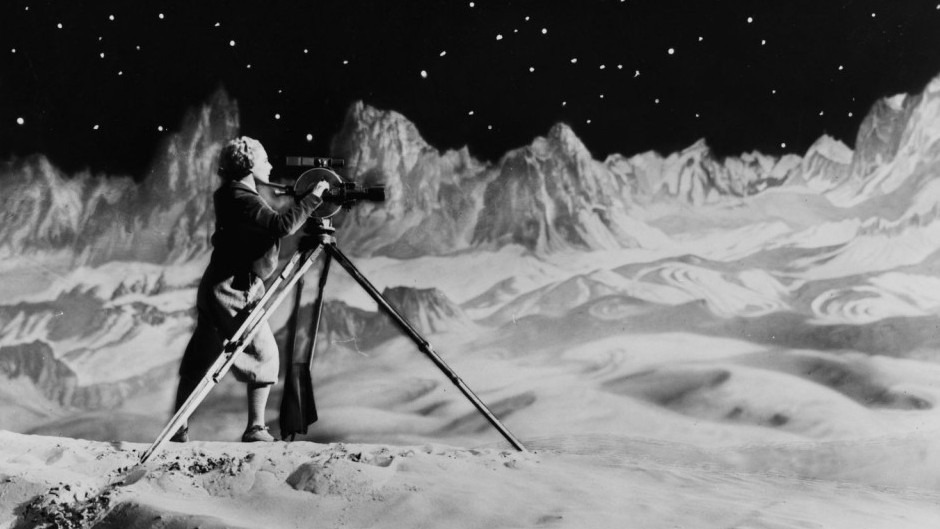
The moon journey is ostensibly made because there is gold beneath the lunar surface, but a slew of plot complications — including espionage, evil corporate overlords, a love triangle and underage stowaways — means that the protagonist and his girlfriend are left behind on the moon while everyone else goes home. Because of the split resolution and also because this is probably the first time a woman was depicted going to the moon (something which has yet to happen in real life), this adventure gets to have two watches.

The Speedmaster Apollo 11 50th Anniversary Moonshine Gold Limited Edition goes to the guys with the happy ending, the ones who get to return to Earth with their payload of moon gold. In the film, only the far side of the moon has a breathable atmosphere, so our stranded couple get the Speedmaster Moonwatch “Dark Side of the Moon” in bleak acknowledgement of their fate.
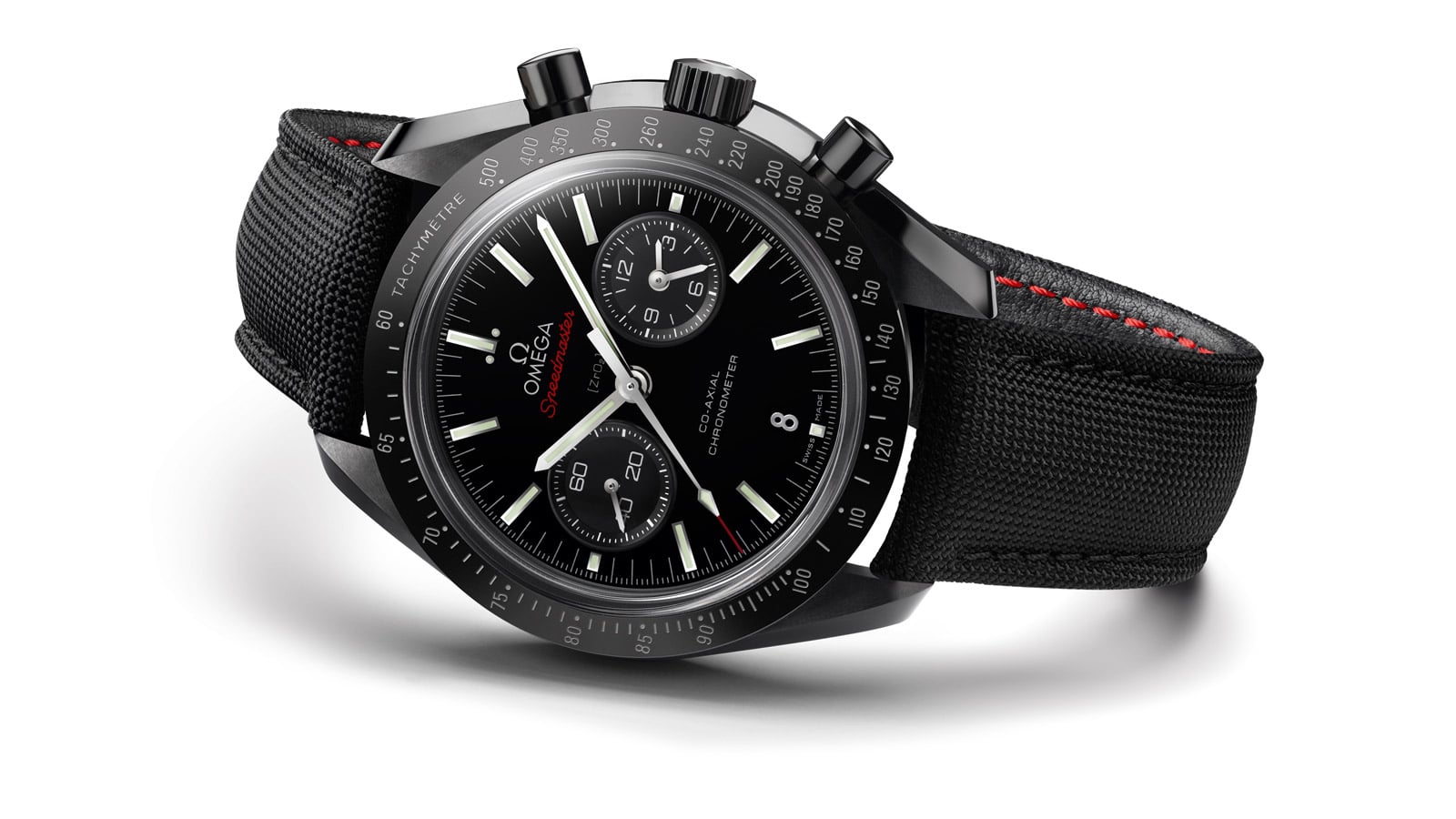
Explorers On The Moon (1954), Hergé
There really shouldn’t be any debate about this, and if there is, I don’t want to hear it. The Tintin Speedy, as it’s known among collectors, was never officially associated with the famous comic series about a young Belgian investigative journalist, but its outer dial ring of red and white alternating squares is immediately recognisable as a direct homage to the moon rocket that transported our motley band of adventurers into space. There is no other choice possible. End of discussion.

2001: A Space Odyssey (1968), Stanley Kubrick
To be perfectly honest, I never understood this film. (Although the same could be said about any film I watched in my first year of university.) They were on the moon, then there was a spaceship and a psychotic robot, and what does all this have to do with apes beating each other up in the desert?
So, to go with this film that is unlike any other film out there, how about a Speedmaster that isn’t like any other Speedmaster? Ladies and gentlemen, take a close look at the Spacemaster Z-33, a member of the Speedmaster family, bearing the Seahorse logo that is primarily associated with modern Seamasters — a watch that makes you question everything you knew about life.
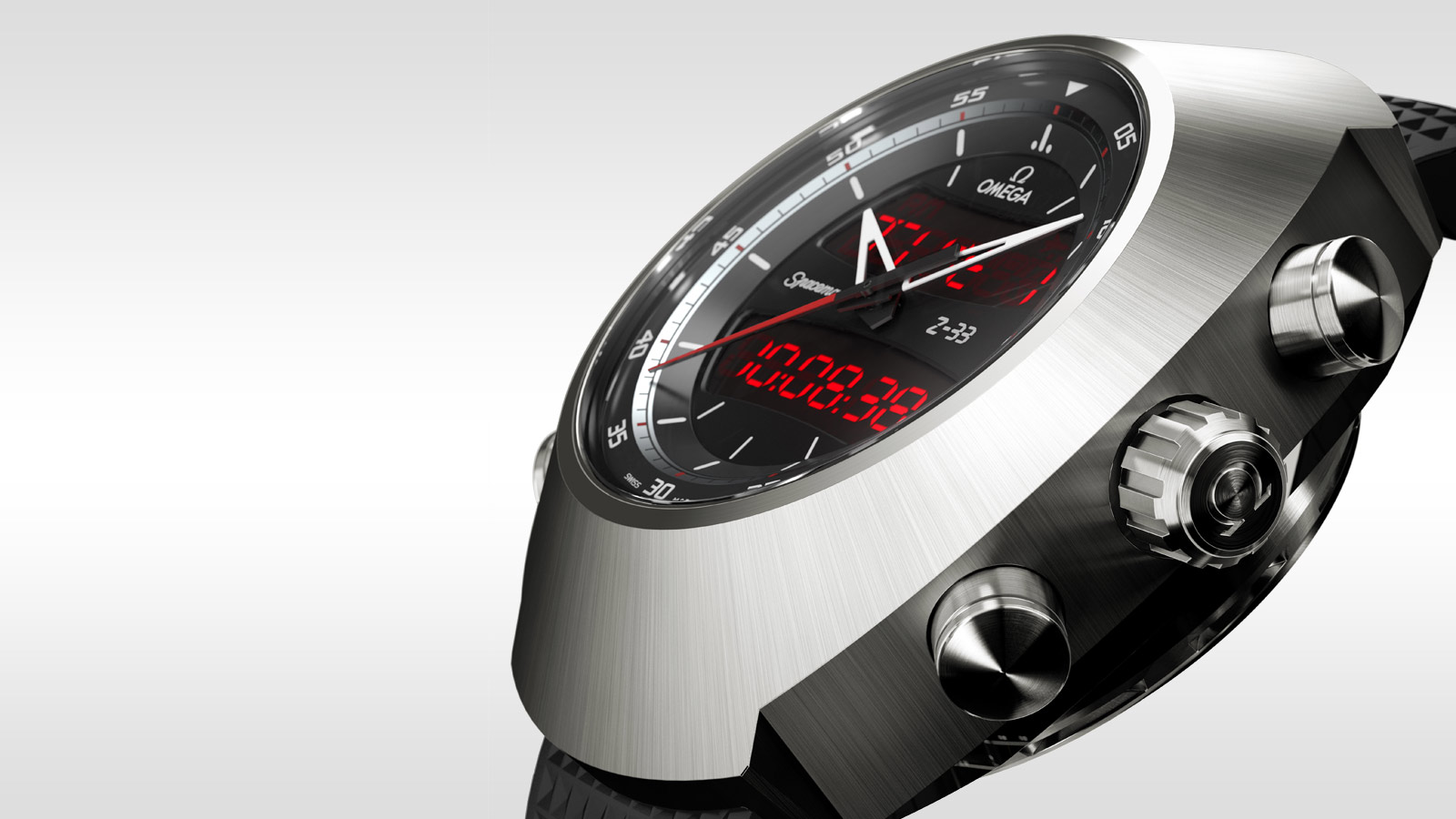
The part-tonneau, part-elliptical titanium case is everything about futuristic design in the late 1960s, with a double-wall caseback that helps amplify the watch alarm. (In case there are cryogenically frozen scientists to wake up during an emergency, you know.) The multi-function quartz movement manifests itself via an intelligent auto-adjusting backlit LCD screen with glowing red alphanumeric display segments that should in no way remind you of the artificially sentient killer computer HAL 9000.
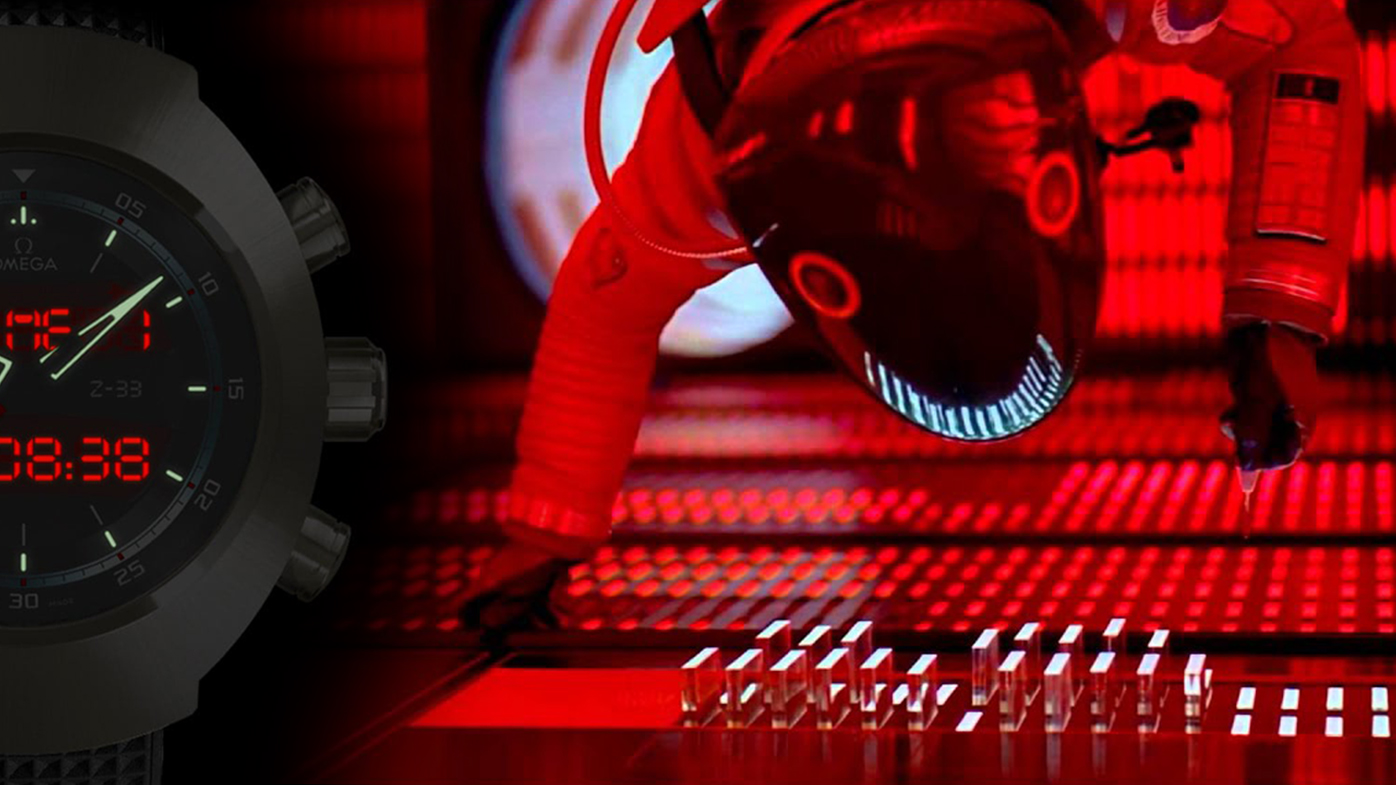
I’ve been told that the ending of the film is supposed to imply that the character David Bowman has transcended humanity and our conventional experiences of time, so it’s pointless to even give him a watch. That would completely ruin this article, though, so I’m sorry Dave, but I’m afraid I can’t do that.
